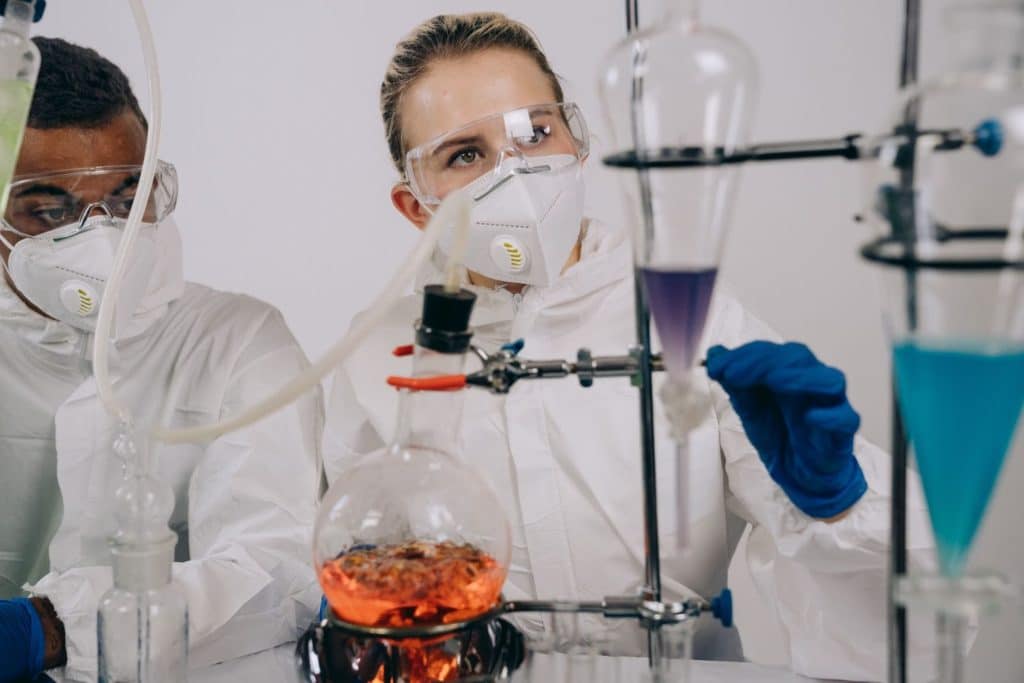What Are Corrosive Substances?

Knowing more about corrosive substances will help you to protect your assets and understand the science of chemical decay, which may be important to your company operations. Specifically, corrosive substances should be handled in particular ways because of their ability to damage various types of items, and in many cases, their inherent toxicity to the skin and human body. Keep reading to learn about the most common corrosive materials.
What Are Corrosive Substances?
Corrosive substances are items that will corrode other materials when they come into contact with them. The Safe Work Australia guide makes note of corrosive chemicals that “…may cause severe skin and eye damage and may be corrosive to metals”. However, substances with corrosive properties can damage many materials. People may refer to some of these as “caustic chemicals” because of the effects that they have on other materials.
It’s important to understand that corrosive substances can be found in liquid or solid forms, or in the form of a gas or vapour. Gas-form corrosive substances, for example, may be analysed in the course of determining workplace safety in factories and facilities where these types of corrosive acids are used in a spray form or infiltrate the air in some way. Corrosive vapours can damage your windpipe, lungs, throat, and the lining of the nose when breathed in, just like liquid corrosive can injure the skin.
Types of Corrosive Substances
The most common types of corrosive materials are various types of acids, which fall between 1 and 7 on the pH scale. although Some alkali metals, which have pH ratings over 7 also qualify as corrosive. Whether acidic or basic, substances become stronger the further from the centre of the pH scale they fall. A strong acid might have a pH of 1, while a strong base has a pH of 14.
On the other hand, weak acids and bases closer to the centre of the scale lack corrosive properties. For example, concentrated hydrogen peroxide can also have corrosive properties despite having a pH of 6,2, which makes it a weak acid. This substance is a type of strong oxidizer that can “decompose violently” when exposed to heat, friction, or shock. This shows that some substances are only corrosive in the right environments.
Another common household chemical, bleach, is corrosive. Bleach is often the common name of sodium hypochlorite (NaOCl) and can safely be used to clean because it is so often diluted with water. The same goes for many other corrosive substances, which is how we employ them to produce goods or clean. Bleach, in particular, is the substance that strips dye from fabrics to create the “acid wash” look, even though it’s not an acid. With a pH of 12, bleach is a strong base, and its corrosive effects can be neutralized with sodium thiosulfate.
Not every corrosive substance is a mixture, however. Some routine periodic elements also have corrosive properties, which is important to consider when you’re trying to figure out which formulations may have corrosive toxicity.
What Are Some Best Examples of Corrosive Acids?
Hydrochloric acid, sulfuric acid, and nitric acid are among the most common corrosive acids. Acetic acid, chromic acid, hydrofluoric acid, and phosphoric acid are also some specific examples of corrosive chemicals with a pH lower than 7.
Elements such as fluorine, chlorine, bromine, and iodine can all have corrosive properties. Zinc chloride is another molecular substance that has corrosive capabilities.
Some corrosive substances exist naturally. Stomach acid, for example, is a strong hydrochloric acid with a pH between 1.5 of 3.5. This is necessary to break down food. The stomach is lined with a protective mucus that prevents this acid from wreaking havoc on the body. We also commonly ingest corrosive acid. Lemon juice has a pH of around 3, which is similar to the pH of pineapple. These acidic foods can cause a tingling or burning sensation if you consume too much of them.
On the other side of the pH scale, ammonium hydroxide and sodium hydroxide are all corrosive bases. The latter is also known as caustic soda or lye and is a common ingredient in cleaning products.
Additional Information About Corrosive Substances
Because corrosive substances can break down certain materials, you must take care when storing or transporting them. The Queensland Government has specific regulations regarding the storage of hazardous materials, including corrosive substances.
Corrosive materials can have some proper uses. For example, various corrosive materials are often used in common cleaning products. However, makers may suggest the use of personal protective equipment, including gloves, face shields and other items when handling corrosive substances. You may also have to follow local laws that dictate material handling procedures.
Although corrosive substances are irritants that can cause inflammation or other discomforts to your body if you don’t protect your skin, eyes, or lungs, they can also protect us from other potentially harmful substances. Those familiar with medicine and dentistry may recognize glutaraldehyde, a corrosive substance that is employed as a disinfecting agent.
Some artists also use corrosive substances to create unique works of art. The process involves the material, typically metal, that has been prepared by protecting part of its surface and an acid (also known as a mordant) that corrodes the unprotected surface. Ferric chloride is commonly used to etch designs in metal. Afterwards, the corrosive acid is rinsed, and protective materials can be removed.
Summary
Corrosive substances are powerful. When mishandled, they can cause personal injury or damage other materials. However, this capability makes corrosive substances useful for applications ranging from production to cleaning. It’s necessary to know how to handle these materials and what to do in case of a spill. Check out Ecospill to learn how to protect your business from hazardous spills.
